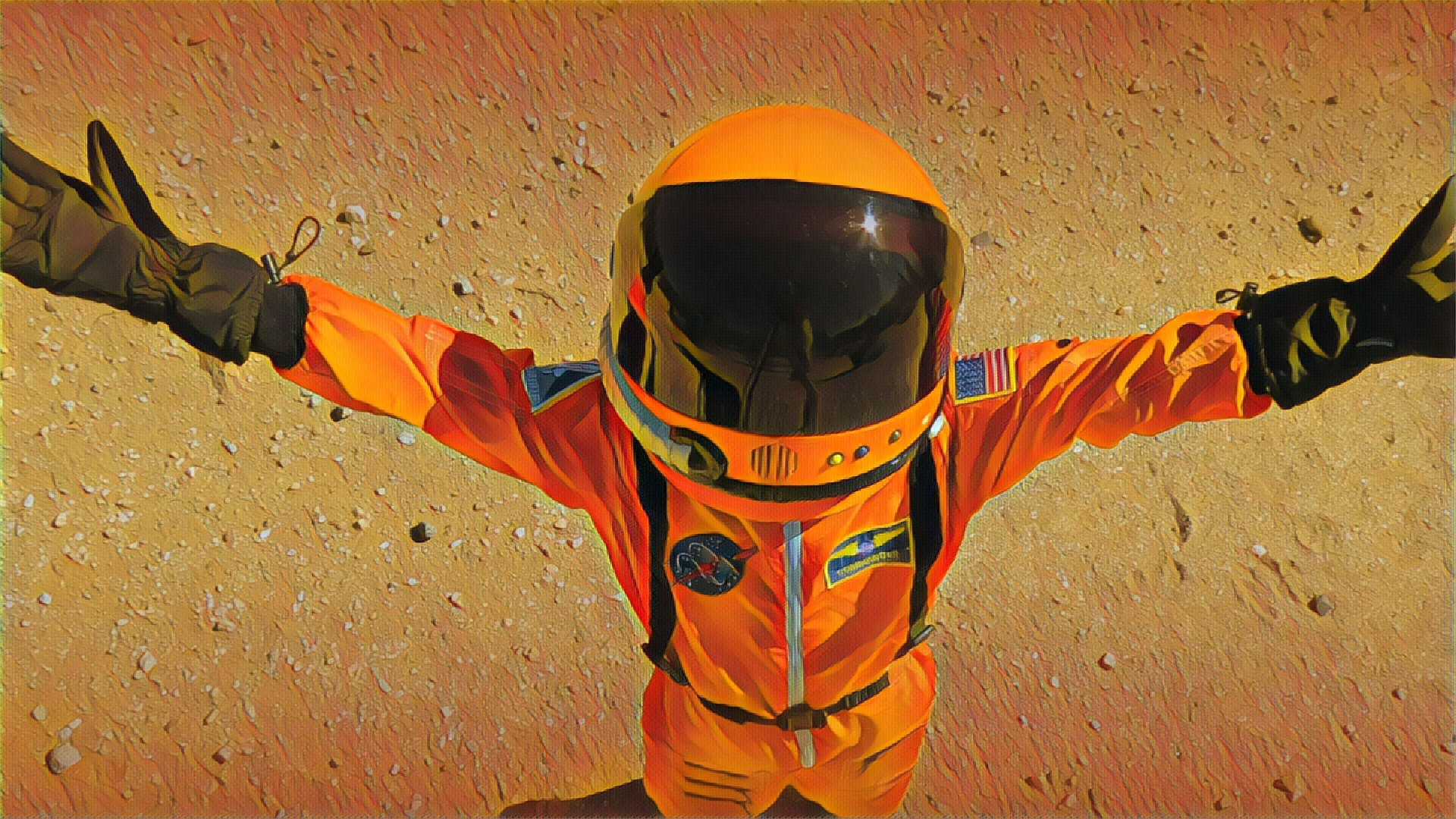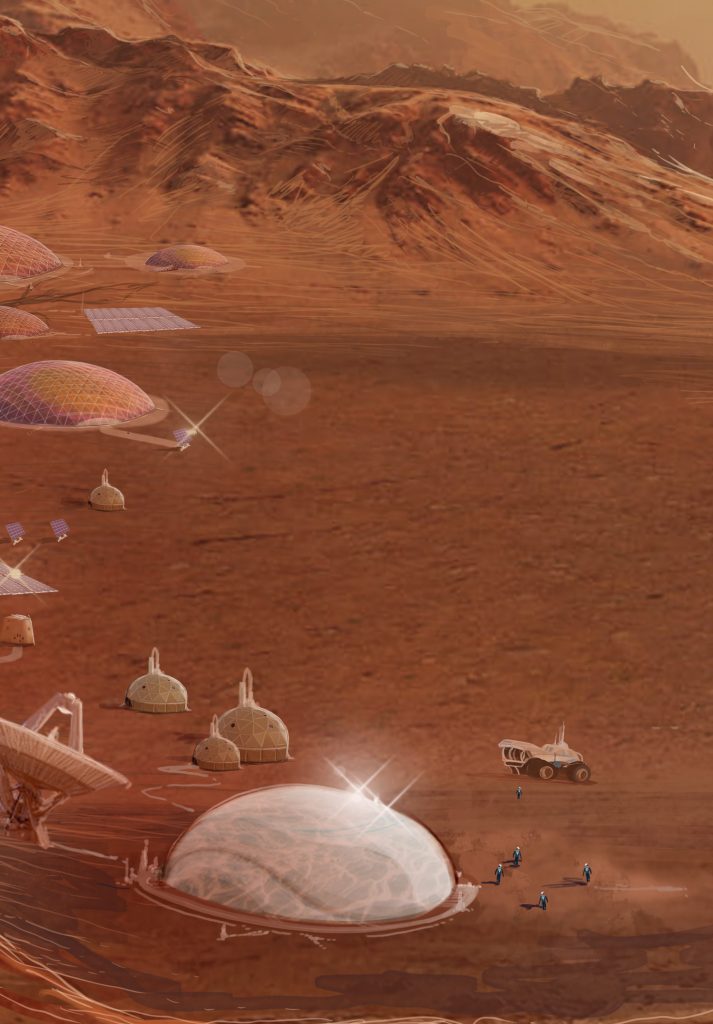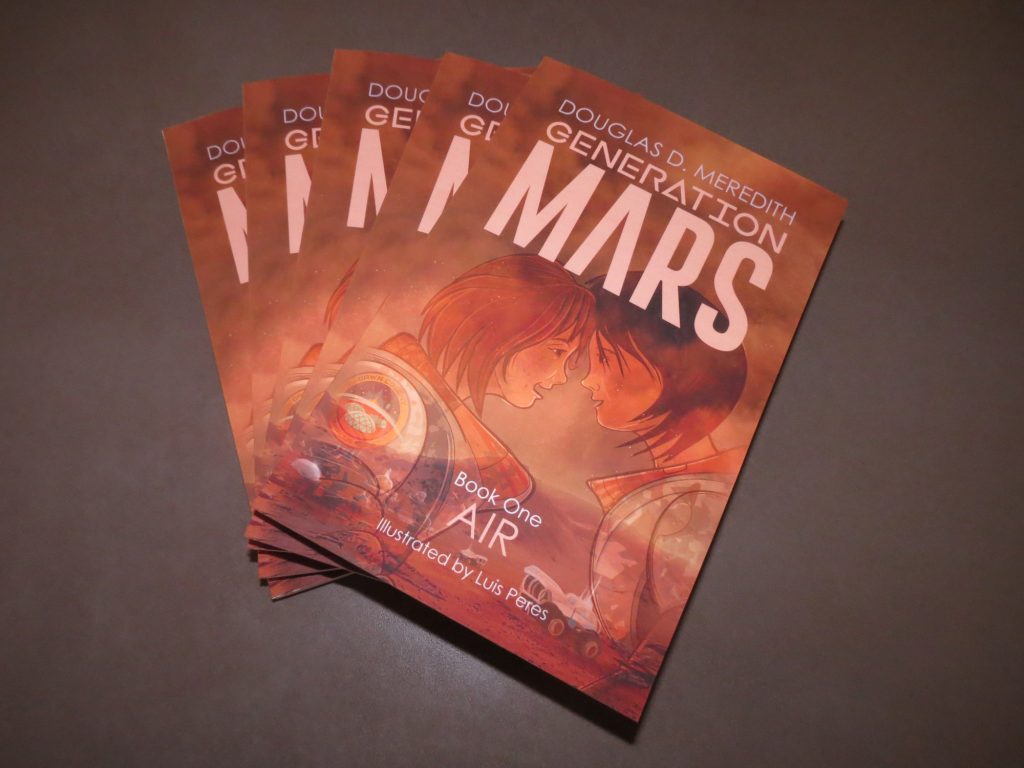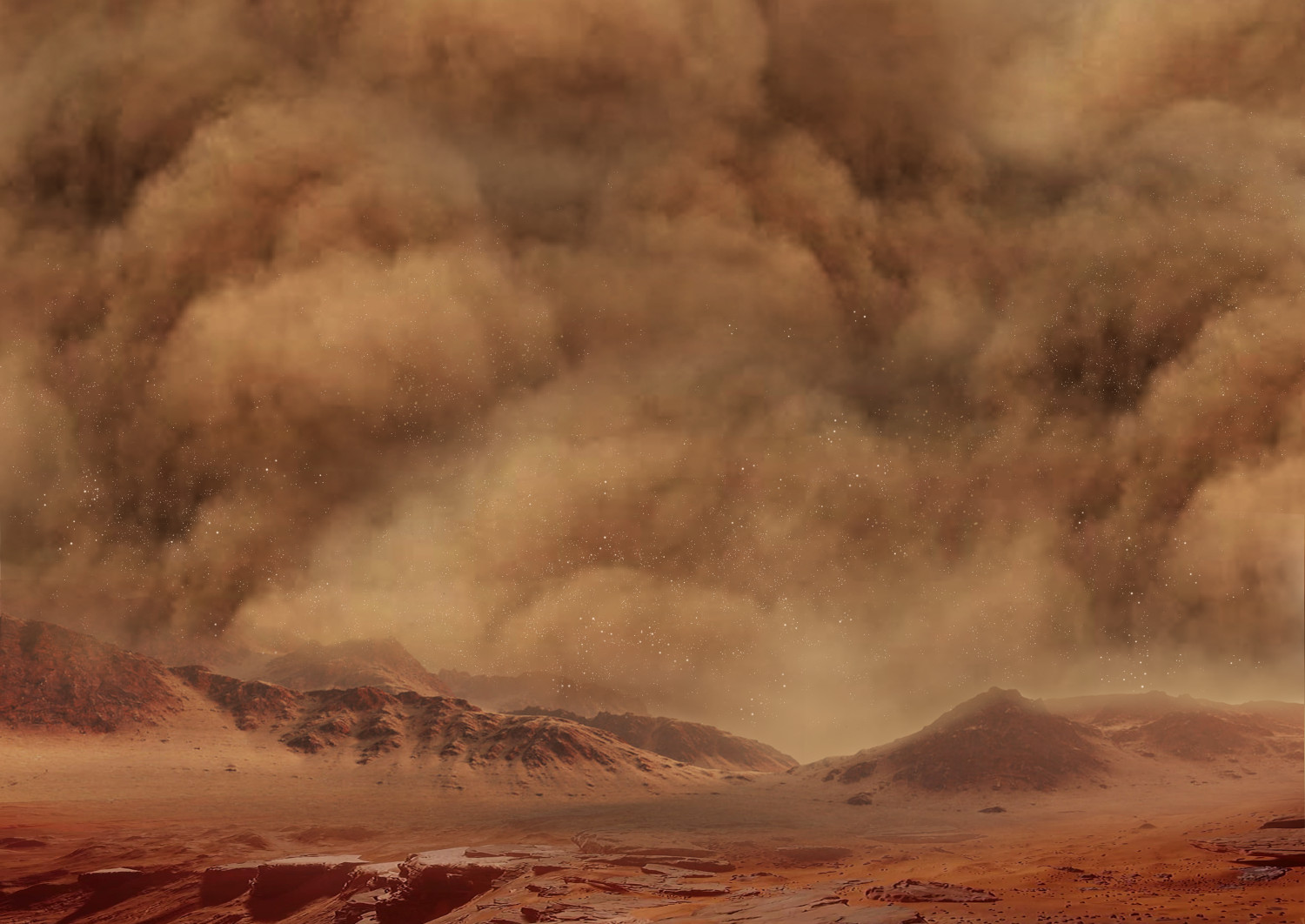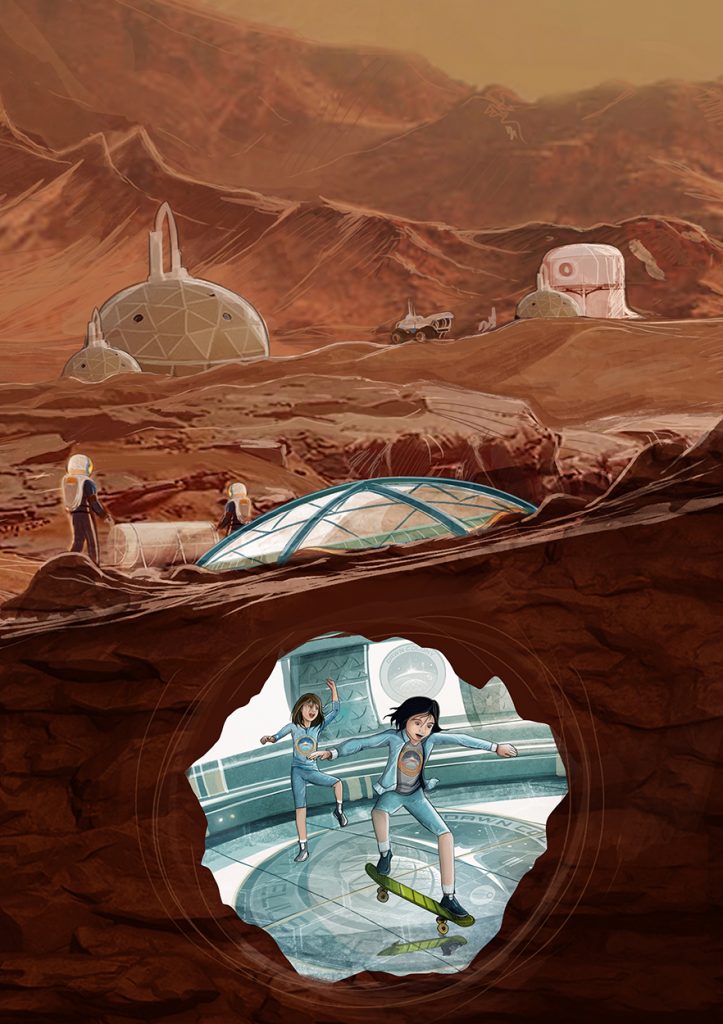Cas looked out through her visor. All she saw was brown, a moving flow of brown, shades of brown ranging from orange to red to pink to yellow, flowing past her in the wind. That wind was moving 50 kilometers per hour with gusts even higher. But the air was so thin that she could feel only slight tugs on her suit. In the lower right corner of her visor screen was the small map of the surface buildings with the red dot that showed where she was standing.
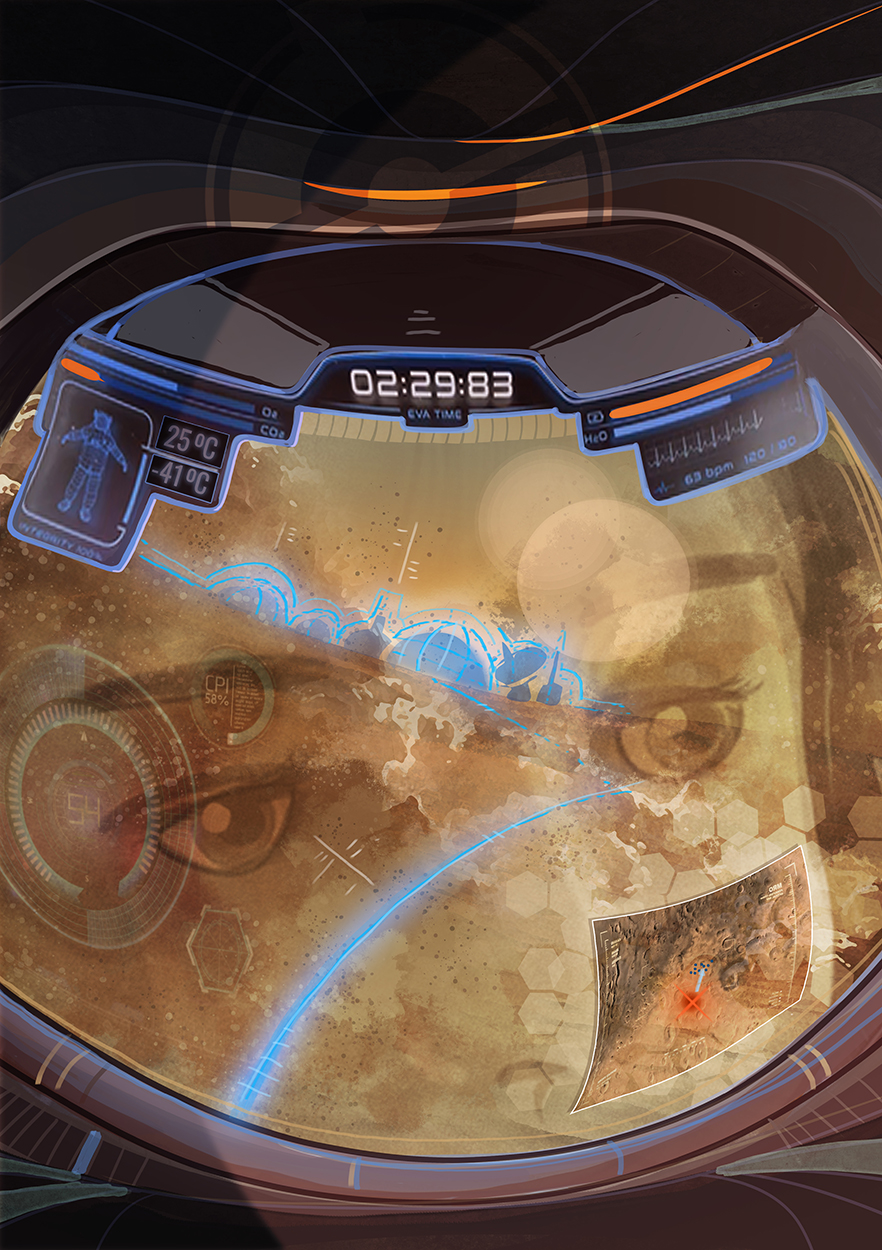
Air: Generation Mars, Book One
Coming in October
(image: Luis Peres)
